Exploring the Craft of Lofi Music Production
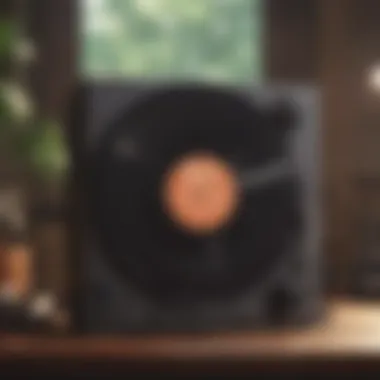
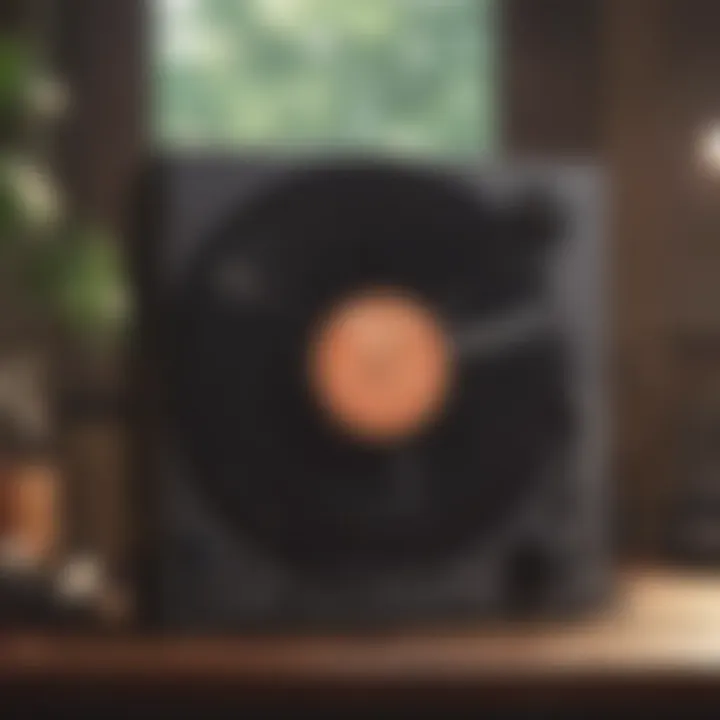
Intro
Lofi music has spurred a captivating culture, fostering connection between listeners and creators alike. This genre is not merely a collection of sounds; it's an immersive experience, steeped in nostalgia and warmth. Picture sitting in a dimly lit room, the subtle crackle of vinyl floating in the air, as smooth melodies ripple through your mind. Lofi producers, often the unsung heroes of this movement, forge intricate soundscapes that invite you to reflect and escape the hustle and bustle of everyday life.
As we peel back the layers of this art form, we will shine a light on the techniques that define the genre. We will take a closer look at the pioneers who shaped its trajectory, as well as the community that sustains it. As such, it is important to explore these elements—not just for enthusiasts looking to refine their skills but also for curious listeners eager to delve deeper into the music they cherish.
Artist Profile
Biography and Background
Lofi producers often wear many hats. It’s not uncommon to find someone who began as a bedroom musician, blending beats in the corners of their living space and sharing them with friends online. Take the case of a producer like Nymano. Hailing from the scenic suburbs of France, Nymano’s work is characterized by fragrant samples, ambient textures, and a personal touch that resonates with his listeners. His journey from a sleepy hometown to a globally recognized name narrates the evolution of lofi music from niche genre to a global phenomenon.
These artists often draw inspiration from various life experiences, channeling emotions into their tracks. They may have dabbled in other music genres or even visual arts before zeroing in on lofi. The shift isn't a deviation; rather, it becomes a rich tapestry woven with experiences, shaping their unique sound.
Major Influences and Inspirations
The influences on lofi producers can be as varied as the colors in an artist's palette. Some may find inspiration from jazz legends like Miles Davis or classic hip-hop artists such as J Dilla. Others might be swayed by the soothing melodies of ambient composers like Brian Eno. The interplay of these genres creates a fertile ground for creativity, resulting in songs that resonate with a wide audience.
Importantly, the visual side of lofi plays a significant role too. The aesthetic of hand-drawn animations and retro visuals often associated with lofi music sets the tone for the auditory experience. This blend of art forms creates a holistic atmosphere that draws listeners into a world where time seems to slow down, allowing them to soak in every note.
Song Analysis
Theme and Lyrics Breakdown
Lofi tracks frequently forego traditional lyrics, opting instead for instrumental narratives. When lyrics do make an appearance, they are often poignant and reflective, capturing moments of solitude and contemplation. Take, for instance, a song that starts with the soft strumming of guitar, weaving in gentle whispers of a love letter—a feeling that many listeners can relate to. The themes often revolve around introspection, nostalgia, and the simple joys of life.
Instrumentation and Composition
The beauty of lofi lies in its simplicity, often employing everyday sounds to create a rich auditory landscape. Expect to hear dusty vinyl samples, rain pattering against windows, and even ambient chatter in coffee shops. These elements breathe life into each composition, establishing an immersive experience.
Producers frequently layer soft piano melodies over a laid-back drum groove, paired with subtle bass lines that lilt softly beneath the surface. These choices work together to create an ambiance that invites listeners to unwind, reflect, or even study.
The yet-to-be-explored nuances of sound blending and sampling techniques are where the magic truly happens. The techniques vary greatly, from looping a serene saxophone riff to layering several samples into a single track. Each decision speaks volumes about the artist's style, their creative process, and ultimately, their place within the lofi community.
"Every sound has a story; it’s just up to the producer to tell it."
As we dive deeper into the artistry, we invite you to consider how these elements intertwine and influence the lofi landscape. Whether you're looking to create your own tracks or simply enjoy the genius behind this music, uncovering the craft of lofi producers leads to richer listening experiences.
Understanding Lofi Music
To grasp the essence of lofi music, it's vital to dive into its roots, definitions, and aesthetic values. This genre may seem simple on the surface, but it possesses multiple layers that connect deeply with listeners and creators alike. Understanding these elements not only enriches the appreciation of lofi but also helps aspiring musicians to carve their own niche within this vibrant field.
Definition and Characteristics
Lofi, derived from "low fidelity," refers to a music production style that embraces imperfections. It intentionally includes ambient noises, tape hiss, and other sonic artifacts, giving it a more organic feel compared to mainstream, polished recordings. Through this authenticity, lofi creates an intimate atmosphere that resonates with its audience, often evoking feelings of nostalgia and comfort.
The characteristics of lofi often include:
- Chill beats: Typically laid-back and mellow, providing a perfect backdrop for relaxation or study.
- Use of samples: Often lifted from old records, these samples inject a rich sense of history and familiarity.
- Minimalistic production: Less focus on complex arrangements; instead, it highlights the beauty in simplicity.
Roots in Hip-Hop and Jazz
The origins of lofi can be traced back to the early hip-hop and jazz scenes. In hip-hop, producers would gather samples from vinyl records, loop them, and add their beats, creating a unique sound that was rich in texture and flavor. This practice not only showcased creativity but also paid homage to legendary artists. Similarly, jazz's improvisational spirit heavily influenced lofi's chill vibe, merging harmonic explorations with the rhythm of urban life.
This connection to hip-hop and jazz does more than just provide a historical context; it adds depth to the music, creating a bridge between genres. The blending of these elements allows listeners to experience lofi music as a space where boundaries are blurred, and creative expression reigns supreme.
Aesthetic Features of Lofi Production
Use of Samples
Utilizing samples stands as one of lofi’s core features, playing a significant role in shaping the genre’s identity. Samples are fragments of existing audio, often taken from music, movies, or field recordings. Their integration creates a tapestry of sound that feels both nostalgic and fresh. The beauty of using samples lies in their ability to connect new music with the past—a resilient link that captures a sense of shared memory among listeners.
What makes samples even more appealing in the lofi context?
- Sense of nostalgia: The snippets often evoke memories, drawing listeners into a dreamy headspace.
- Cultural references: Many samples invite listeners to engage with various art forms, enriching the overall experience.
However, sampling does have its drawbacks. Legal constraints can cause headaches for producers, as copyrighted material can lead to licensing fees or even outright bans from streaming platforms. Navigating these waters often requires creativity and respect for original works.
Analog Warmth and Imperfection
Another key aspect of lofi production is its embrace of analog warmth and imperfection. It's not uncommon to hear vinyl crackle or low-quality recordings—these elements are intentional, designed to create a cozy and relatable sound. Just as imperfections add character to human interactions, they do the same in music.
The appeal of this approach includes:
- Authenticity: Listeners are drawn to a sound that feels real, rather than perfect and polished.
- Emotional connection: The rich textures elicit feelings of comfort, making it an ideal backdrop for studying or relaxing.


Yet, the use of analog warmth can pose challenges, as producing this sound might require gear that not everyone can afford. Access to genuine analog equipment can be limiting for some aspiring producers.
"The beauty of lofi isn't just in its sound, but in its ability to transport you to a different time and place. It's music that invites you to pause and reflect."
By understanding the fundamentals of lofi music, its producers gain vital know-how to create a sound that resonates with audiences while remaining true to themselves and the genre's core values.
The Role of Lofi Producers
Lofi producers serve as the hidden architects behind the laid-back soundscapes that define the lofi genre. Their role is vital; they not only shape the sound of the music but also weave a musical narrative that connects listeners with feelings of nostalgia and contemplation. The artistry lies in crafting accessible, yet intricate auditory experiences that evoke a varied emotional response and foster a unique atmosphere. By doing this, they bring their own flair to a heavily sampled and emotionally resonant medium, contributing to a broader cultural tapestry.
Key Functions of a Producer
In the world of music production, the lofi producer wears many hats. One of the most critical functions is sound design. They select and manipulate sound samples that often range from obscure vinyl records to everyday noises. This careful curation becomes the backbone of the track. Rather than simply layering beats, lofi producers often focus on creating a sense of space that pulls listeners in.
Another important function is mixing and mastering. While it sounds technical, mixing is more about mood and vibe in lofi. Producers have to balance different elements—like ensuring the crackling of a vinyl doesn’t overwhelm the melody, fostering that signature warmth. Simultaneously, the mastering process is essential; it ensures the final product translates well across platforms, whether someone is tuning in through earbuds or a home stereo. These functions establish the overall identity of a track and define the lofi sound.
Collaboration with Artists
Collaboration between lofi producers and artists is often a dance of artistic expression. Many times, producers collaborate with vocalists, musicians, or even other producers. This exchange not only adds depth to the music but also infuses fresh ideas and creativity into the production process. Communication here is key. It allows producers to understand the vision of the artist while creatively guiding them towards achieving their sound. A noteworthy aspect of this collaboration is the potential to blend vocals with instrumentals seamlessly, enhancing the emotional layers within the track. Collaborations also expand the reach of the genre, introducing new audiences to the lofi realm.
Bridging Genres and Styles
Cross-Genre Pollination
Cross-genre pollination is a common practice in lofi production. Producers often draw inspiration from various musical styles, mixing jazz, hip-hop, ambient, and even elements of classical music. This merging creates a rich sound palette that resonates deeply with diverse listeners. The key characteristic of this approach is versatility. By not limiting themselves to one genre, lofi producers can experiment with different techniques and sounds, creating something fresh and exciting. This versatility is what makes it a popular choice among many musicians and music lovers alike.
However, cross-genre pollination does present its own set of challenges. It requires a delicate balance between integrating contrasting elements without losing coherence. But the advantages often outweigh the disadvantages; the result is an innovative sound that can capture nostalgia yet feel modern and new.
The Role of Experimentation
The role of experimentation is paramount in the production process. Lofi music thrives on the willingness to try and fail, to push boundaries, and to step outside of conventional musical frameworks. In this space, producers often utilize unconventional instrumentation or incorporate found sounds to add authenticity to their tracks.
Through experimentation, producers can discover unique sounds that resonate with their audience. The key characteristic of this aspect is its unpredictable nature. While it might seem risky, it allows for spontaneity and creativity that can lead to groundbreaking music. Plus, this willingness to experiment often attracts listeners looking for something atypical, making it immensely beneficial for both the producers and the genre.
However, it's essential to note that experimentation can sometimes lead to chaos. A track can easily become cluttered if not handled properly. That said, the heights reached through effective experimentation often make it worth the risk.
"Creativity is allowing yourself to make mistakes. Art is knowing which ones to keep." – Scott Adams
Overall, the role of lofi producers is not just about producing sounds; it’s about crafting a cohesive experience that connects with listeners on a deeper level, making their contributions invaluable to the genre.
Technological Influence on Lofi Production
The landscape of lofi production is heavily influenced by technological advancements that shape the sound and accessibility of the genre. The tools available today not only allow producers to create their unique soundscapes but also enable greater experimentation. With technology as the backbone, lofi music has transformed from niche to mainstream, gathering a dedicated audience along the way. The charm of lofi often lies in its imperfections, which can be enhanced and manipulated using various technologies. Now, let’s dive into some of the core elements that define the technological influence on lofi production.
Software and DAWs
Producers often find themselves at a junction where creativity and technology converge, powered by digital audio workstations (DAWs). These platforms, such as Ableton Live, FL Studio, and Logic Pro, provide an extensive range of production tools that revolutionized music creation. A DAW is like a painter's canvas; it offers a space where every sound can be molded and transformed. The appeal of a DAW lies not just in its functionality but also in its intuitiveness, allowing both novices and seasoned artists to express their musical vision freely.
- Flexibility: Producers can easily manipulate sounds, apply effects, and record live instruments, all in one place.
- Accessibility: Manufacturing music no longer requires a grand studio setup. A laptop with a DAW can be the world of creativity.
- Learning Curve: While some DAWs may initially overwhelm beginners, many offer various tutorials and community forums that ease the learning process.
Sampling Tools
In the world of lofi, samples are akin to the threads that weave the fabric of the sound. Sampling tools have matured significantly, giving producers access to a treasure trove of sounds from various sources. Tools like Native Instruments’ Kontakt or Serato Sample empower producers to slice and dice audio samples, adjusting them to fit their artistic needs. This ability to repurpose existing audio into something fresh is not just a technique; it’s a form of storytelling.
- Range of Sources: Sampling can draw from anywhere, be it vinyl records, nature sounds, or even conversations.
- Creative Freedom: The manipulation of samples provides endless possibilities for creating unique rhythms and melodies.
- Legal Considerations: However, producers must tread carefully to navigate copyright laws related to sampling, which can sometimes pose a challenge.
Effects and Processing Techniques
To give lofi productions their distinctive sound, effects and processing techniques play a crucial role. They lend character and depth that imbue the music with a sense of nostalgia and warmth.
Reverb and Delay
Reverb and delay are two effects that producers regularly employ to enhance the overall sound of their tracks. Reverb simulates the acoustics of a space, making sounds feel more immersive. Delay creates echoes, adding rhythm and depth to the music.
- Atmosphere: Reverb can imbue a track with a sense of vastness, making it feel more expansive. This aspect contributes to the dream-like quality of many lofi tracks.
- Rhythmic Quality: Delay, on the other hand, can create loops that enrich the track, lending a moving feel to the rhythm.
- Considerations: While both effects are popular, overuse can muddy the track, drowning essential elements in haze. Finding the right balance is essential for achieving clarity.
Vintage Effects Simulation
Vintage effects simulation aims to recreate the sounds of old recording equipment like tape machines and vinyl players. This technique resonates deeply within the lofi aesthetic, as it enhances the imperfection and organic feel of the music.
- Character: Vintage effects add warmth and a certain nostalgia, akin to listening to records on a rainy day. They often introduce subtle crackles and pops that enrich the listening experience.
- Popularity: Many producers have embraced this style, as it adds a unique flair that resonates with listeners longing for a simpler time.
- Trade-offs: However, integrating vintage effects can sometimes lead to a loss of clarity, as older equipment is known for its less-than-perfect audio quality. Finding the sweet spot between authenticity and clarity becomes crucial in production.
"Technological tools empower lofi producers to explore and break boundaries, making the old sound new again."
Notable Lofi Producers
In the world of lofi music, certain figures shine like stars in a clear night sky, each possessing a style that leaves indelible marks on the genre. Recognizing these notable lofi producers is essential, as they not only shape the sound of lofi but also inspire countless artists and listeners alike. They're the craftsmen who use sonic texture, samples, and mood to weave complex emotions into seemingly simple melodies, making their contributions critical to understanding lofi's evolution.
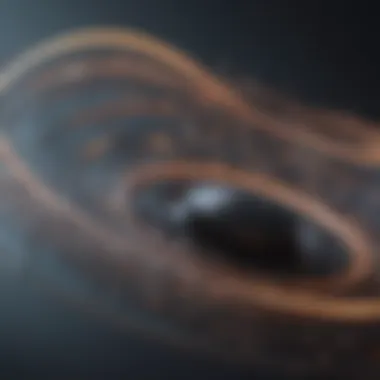
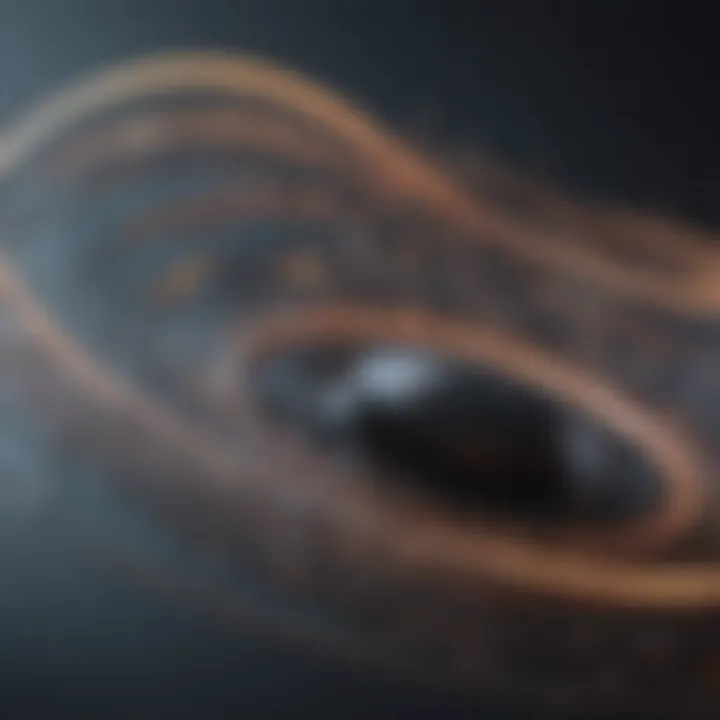
Influential Figures in the Genre
Influential figures in lofi production can often be spotted by their trademark sounds. Take Nujabes, for instance. His unique blend of hip-hop and jazz laid much of the groundwork for what we consider modern lofi. Known for his smooth instrumentals and lush arrangements, Nujabes can create a soundscape that feels both intimate and expansive, pulling listeners into a world rich with nostalgia. Similarly, producers like J Dilla are pivotal; his innovative sampling techniques and rhythmic genius have deeply influenced not only lofi but hip-hop as a whole. Those early sounds created a ripple effect that can still be heard in tracks today.
"Music is a portal, and the great producers create rounds that take you to places you didn't know you wanted to go."
The likes of Kudasai and idealism have carved their niches through meticulous crafting of beats that evoke a sense of serenity and introspection. These producers have become stalwarts in the community, helping to establish lofi as not just a genre but a lifestyle. Not merely constrained to the sound, they often become the voice of the underground cultures thriving around them.
Emerging Artists to Watch
As the landscape of lofi evolves, new artists continue to emerge from the underground scene like buds in spring, ready to bloom. Figures like Joakim Karud and Dmitriy Ivankov are gaining traction for their fresh takes, experimenting with sounds that blend digital age sensibilities with traditional aesthetics. Karud's tracks often incorporate vibrant melodies bound by rhythmic layers, making them appealing for various uses—from background music to focused listening experiences.
On the other hand, Dmitriy Ivankov has tapped into the pulse of modern lofi, fusing elements from various genres while staying true to its calming roots. This exploration adds layers to the genre, drawing in a broader audience and encouraging people to appreciate the artistry involved in lofi music production.
Watching these emerging artists is vital for music enthusiasts and aspiring producers. Their innovations could very well chart new paths in the genre, shifting cultural perceptions and creative approaches along the way.
Collaborations That Shaped Lofi
Collaborations in lofi have always sparked creativity, marrying the diverse influences of different artists. One noteworthy pairing is between lofi producers and visual artists. Take the collaboration between Chillhop Music and various animators; their work on music videos complements the soothing sounds of lofi, merging audio and visual art seamlessly. This synergy enhances the listening experience, creating an immersive world for fans that transcends simple audio enjoyment.
Another prominent collaboration can be seen with artists like Joji, blending his unique vocal style with iconic lofi beats, breathing new life into what lofi can be. These artistic partnerships don’t merely add tracks to an album; they redefine the potential of lofi music, pushing boundaries and challenging the norms that previously defined the genre.
Leveraging the strengths of each artist leads to a fresh sound and broadens the community, creating a kaleidoscope of artistry that is beautiful to behold.
In summary, the exploration of notable lofi producers reveals not just a collection of influential figures but also the essence of a community continually shaping and reshaping the genre. Whether through the timeless influence of past giants or the fresh voices emerging today, lofi music remains a dynamic landscape, ripe for discovery and innovation.
The Cultural Impact of Lofi Music
Lofi music has carved out a unique niche in the larger musical landscape, influencing not just producers and artists but also listeners who seek solace in its gentle, immersive sounds. It resonates well beyond the aesthetic pleasure; it's tied deeply to contemporary cultural dynamics. Understanding its importance requires examining several key factors: social connectivity, emotional resonance, and its role in creativity and productivity.
Lofi’s Rise in Popularity
Over the last decade, lofi music has surged in visibility, transforming from a subgenre into a cultural phenomenon. This rise can be chalked up to its accessibility and the serene, chill atmosphere it creates. Online platforms, particularly YouTube and Spotify, have seen a marked increase in lofi playlists. Many listeners have turned to it for relaxation, studying, or even just background ambiance. Its universal appeal lies in its simplicity and ability to evoke nostalgia, often drawing on samples from older jazz or hip-hop records. This fusion connects a broad audience that appreciates both modern digital soundscapes and classic vibes.
The Role of Streaming Platforms
Streaming platforms have played a pivotal role in the dissemination of lofi music. On YouTube, channels like "Lofi Girl" have become hubs for listeners, offering uninterrupted streams that invite a community of followers. These platforms allow producers to share their work widely without the hurdles usually associated with the traditional music industry. From algorithm-driven recommendations to curated playlists, platforms have helped to not only promote established artists but also catch the attention of emerging producers.
Community and Listener Experience
Virtual Spaces for Connection
One of the most fascinating aspects of lofi's cultural impact is how it fosters virtual connections among listeners. Platforms like Reddit and Discord allow fans to engage actively, discussing their favorite tracks or sharing tips on production techniques. What stands out in these spaces is the inclusive nature—an open invitation for everyone to join the conversation, no matter their experience level in music production.
Key Characteristics:
- Accessibility: These virtual spaces break down barriers to entry, encouraging discussions among diverse music lovers.
- Shared Experience: Users often gather on streams, creating a sense of community despite geographic separation.
Unique Features:
- Real-Time Engagement: Listeners can interact with each other and sometimes the producers in real-time during live streams.
- Feedback Loops: These communities allow budding artists to receive immediate feedback and support, helping them hone their craft.
Fan Culture and Engagement
Fan culture surrounding lofi is particularly robust. Listeners often engage with artists on platforms such as Facebook and Instagram, sharing their interpretations of the music. This connection fosters a unique sense of ownership over the music, as fans frequently remix or create artwork inspired by their favorite tracks.
Key Characteristics:
- Fan-Driven Content: Many fans create remixes or videos, contributing to the genre's evolution.
- Collaborative Spirit: The willingness of fans to collaborate with artists enriches the overall scene and encourages creative expressions.
Unique Features:
- User-Generated Playlists: Many fans curate their playlists on streaming platforms, further contributing to the lofi ecosystem.
- Support Networks: These groups often help each other navigate their artistic journeys, whether through sharing production tips or emotional support.
"The lofi scene is like a digital campfire where everyone is invited to bring their sound and stories, uniting us in the warmth of shared experiences."
Educational Resources for Lofi Producers
Understanding the intricacies of lofi music production is more than just playing around with sounds. For aspiring lofi producers, tapping into a plethora of educational resources is key. These resources can help decode the complex maze of lofi's sonic landscape. They offer insights into techniques, tools, and the general ethos of this genre. Education is an enabler, allowing producers to grasp both foundational skills and advanced methodologies in crafting their unique sound. A careful balance between theory and practice nurtures creativity while providing the skills necessary to express it. Let's look closer at some of the most effective tools that producers can utilize to advance their craft.
Online Courses and Tutorials
Online learning platforms have become a treasure trove for those looking to learn lofi production. Various websites offer structured courses that cover everything from basic beat-making to intricate sound design. Many courses, such as those found on sites like Skillshare or Udemy, include video lessons, downloadable materials, and even feedback from instructors.
These courses often break down complex concepts into digestible parts, making it easier for newcomers to grasp essential production techniques. Additionally, you can find focused courses on specific DAWs, which can demystify the software usage for many newcomers.
Some popular platforms to consider include:
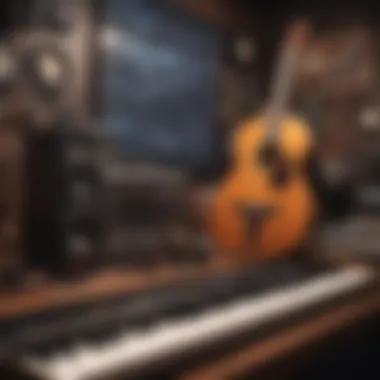
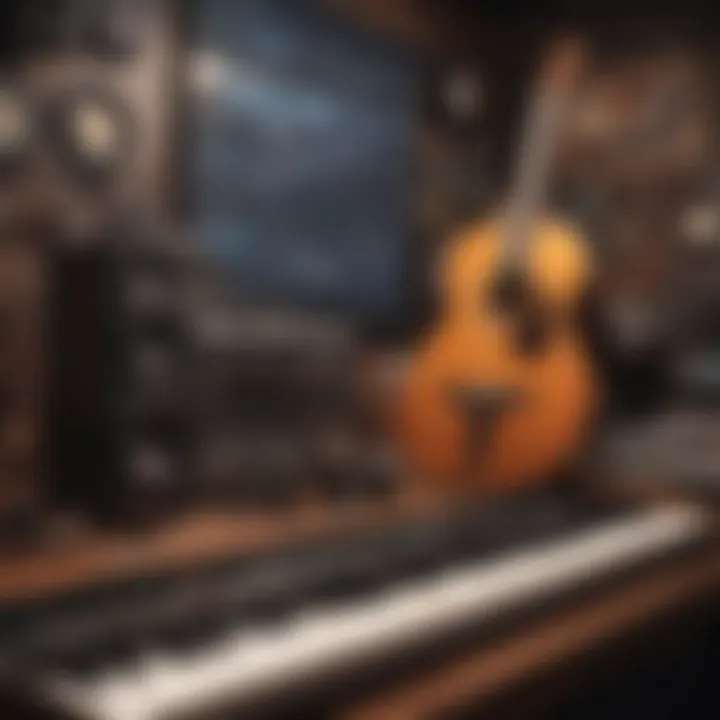
- Coursera: Offers courses that often collaborate with leading universities.
- YouTube channels: Many producers share insights, tips, and walkthroughs.
- Lynda: Offers a vast library of tutorials.
As an aspiring lofi producer, participating in online courses not only enhances skills but also helps build a routine around learning and practice.
Books and Literature
Books hold a certain kind of wisdom that resonates beyond mere instructional content. When it comes to lofi production, several authors and producers have penned down invaluable insights. Reading about the historical context and aesthetic principles of lofi music can foster a deeper understanding of the genre.
Some notable titles worth exploring include:
- "How to Write Songs on Guitar" by Rikky Rooksby - Although focused on guitar, it provides valuable insights into songwriting fundamentals that are beneficial for any genre.
- "The Mixing Engineer's Handbook" by Bobby Owsinski - This guide offers tips on mixing, which is crucial for achieving that signature lofi sound.
- "The Art of Music Production" by Richard James Burgess - This book discusses various aspects of music production, useful for both novices and seasoned producers.
Engaging with books allows producers to internalize techniques and philosophies at their own pace, leading to a rich and more nuanced approach to their art.
Online Communities and Support Networks
The digital age has transformed how musicians and producers connect. Forums, social media platforms, and various community sites offer invaluable support and networking opportunities for lofi producers. Websites like Reddit have dedicated subreddits where producers share experiences, critique each other's work, and offer resources. It’s like having a virtual studio filled with peers who understand the lofi journey.
Additionally, Facebook groups related to lofi production provide an interactive arena for discussions. Engaging in these communities can lead not just to valuable feedback on one's work but also potential collaborations. Finding a support network can be compared to surrounding oneself with other artists who can inspire and push creative boundaries.
Key platforms for community engagement include:
- Reddit – Check out r/lofimusic for discussions.
- Facebook Groups – There are many lofi-specific groups that foster discussion.
- Discord Servers – These provide real-time communication with other producers and musicians.
In sum, connecting with others can serve as a rich source of inspiration and knowledge, helping to cultivate the skillset necessary for successful lofi production.
"The best teacher is experience and not through someone's distorted point of view." - Anonymous
Learning from various resources, undergoing structured courses, reading literature, and engaging with online communities can significantly shape a lofi producer's journey, enriching their artistic expression and technical adeptness.
Challenges Facing Lofi Producers
Addressing the challenges faced by lofi producers is crucial to understanding the inner workings of this genre. The landscape of lofi music production is not just about crafting relaxing tunes; it’s rife with obstacles that test the resolve and creativity of producers. This section will unfold some of the primary challenges, revealing how navigating them impacts both the producer's artistry and the integrity of the genre as a whole.
Navigating Copyright Issues
Copyright laws loom large over lofi production, often likened to walking through a minefield. Sampling, a central pillar of lofi music, can easily tread into murky waters. Producers often pull from a rich tapestry of old records or obscure sound clips, but doing so without proper clearance can land them in hot water.
The complexity arises because copyright laws vary by country. Some producers find themselves unsure about what falls under “fair use,” risking possible legal battles. The rise of platforms like SoundCloud and YouTube, where lofi music often thrives, adds additional layers to this situation. If a producer isn’t careful, their work might get flagged, leading to the dreaded takedown notice. As a result, many lofi producers either choose to create original music or rely on royalty-free samples, but both approaches come with their own set of challenges.
Maintaining Originality
In an era where anyone with a laptop can produce music, standing out from the sea of similar-sounding tracks becomes a daunting task. Many creators worry about achieving a sense of authenticity while echoing the characteristics that define lofi, such as crackling vinyl sounds or subtle imperfections.
The battle for originality often pits nostalgia against innovation. How can a producer evoke the warm embrace of the past while paving their unique musical path? This delicate balance calls for experimenting with new sounds and layering techniques.
- Using unexpected instruments or sounds
- Incorporating different genres as influences
- Experimenting with tempo and rhythm
Each of these elements can help spark an original idea, yet the fear of falling into cliché remains a constant shadow. Navigating this tightrope requires both technical skill and creative courage.
Balancing Commercial Aspirations with Artistic Integrity
More often than not, the desire to turn a passion for lofi production into a viable career collides with the need to stay true to one’s artistic vision. The commercial landscape for music is unforgiving. Producers may feel pressured to adopt popular trends or chase viral success, diluting their unique style in the process.
Entrepreneurs in the lofi genre must evaluate their motivations.
- **Should they stick to their roots and risk obscurity? **
- Or should they adapt to demands of a wider audience?
This dilemma can lead to a sense of frustration. Some may resort to formulaic approaches that yield quick results instead of cultivating a distinct sound that resonates with their personal experiences and artistic inclinations. This struggle between commerce and creativity poses critical questions about identity and authenticity in lofi production.
"Staying true in a fleeting industry often feels like trying to catch smoke with your bare hands."
As lofi producers move forward, embracing the inherent challenges while maintaining their integrity becomes paramount. Their journey encapsulates a synthesis of personal and collective expression, ultimately shaping the ever-evolving lofi genre.
The Future of Lofi Production
The lofi music scene is evolving at a pace that even the most seasoned producers can barely keep up with. This evolution is essential for understanding how future sounds might shape the artistic landscape. As we step further into an age powered by technology and cultural exchange, the potential for lofi music to innovate and adapt has never been more significant. This segment dives into what tomorrow might look like for lofi producers, focusing on the driving forces behind technological advancements and the ongoing genre transformations that promise to reshape the sound of our nostalgic soundscapes.
Innovations on the Horizon
Looking ahead, there are numerous innovations poised to influence lofi production.
- Artificial Intelligence: The use of AI in music production is on the rise. Tools that analyze listener preferences are already giving producers insights for tailoring their sound, perhaps even generating samples in a lofi style. Imagine a machine that learns your taste over time and starts crafting blends inspired by your favorite tracks.
- Enhanced Sampling Tools: As digital sampling grows, more sophisticated tools may enable lofi producers to manipulate sounds in ways we can only start to fathom. New platforms could emerge, allowing easier integration of live sounds and analog recordings.
- Virtual Reality Experiences: The idea of immersive music experiences is gaining traction. Producers might create virtual environments where listeners can engage with lofi music in three dimensions, layering in visuals that match the audio ambience.
- Global Collaboration: With the internet knitting together a global community, lofi producers can collaborate with artists from different backgrounds. This could result in a rich tapestry of sounds reflecting diverse cultural influences, making each track a blend of universal elements and unique local textures.
"Innovation is not just about technology; it’s about rethinking what we know and how we create."
Potential Genre Evolutions
The lofi genre is not just static; it's like a river, ever-flowing and changing shape. As we peer into the future, several trends might redefine what lofi music can be.
- Blending with Other Genres: We are sseeing lofi slowly intertwining with other genres, such as ambient, chillwave, and even elements of pop. The lines between musical categories are blurring, offering fresh sounds that could challenge traditional lofi structures.
- Increased Sentimentality: The nostalgia that defines lofi is likely to evolve. As younger generations or listeners seek new emotional connections with music, producers might begin to infuse their tracks with more personal stories or cultural references, creating a deeper level of engagement.
- Interactive Music: In the age of tech-savvy audiences, the idea of interactive lofi tracks may take off. Imagine a song that shifts its tempo or structure based on listener feedback or mood, creating dynamic and personalized music experiences.
- Eco-Conscious Production: As global awareness regarding sustainability grows, there's a chance that lofi producers will adopt more eco-friendly practices, leaning towards samples from renewable resources or utilizing platforms that prioritize social responsibility.
In summary, the future of lofi production carries a wealth of possibilities, driven by innovation and changing listener expectations. Staying attuned to these developments is crucial for aspiring producers and enthusiasts alike, as this genre continues to craft its legacy amidst a backdrop of rapid change.







